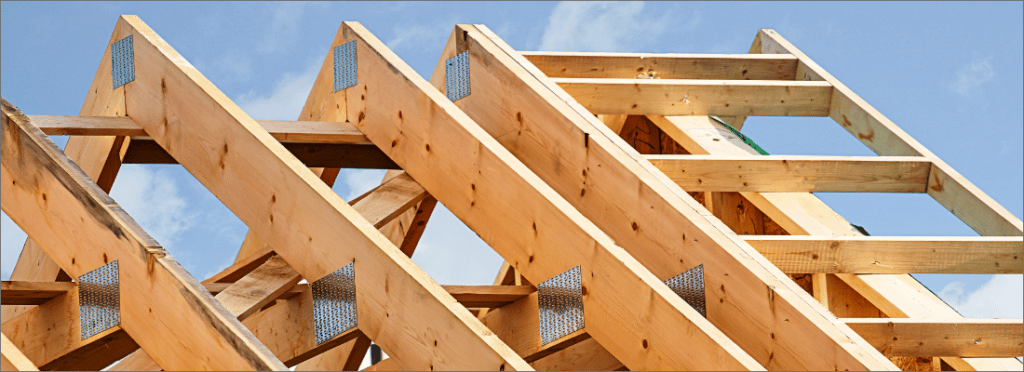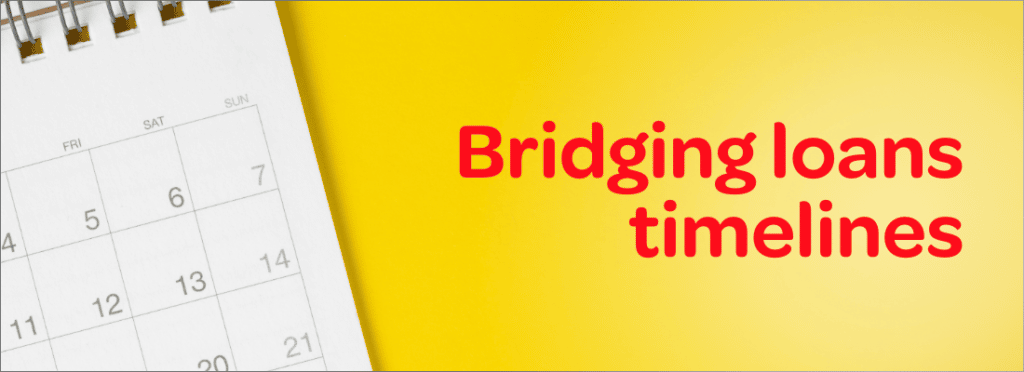Picture this: you’re a homeowner and you’re living in a nice house, but it isn’t your ideal home. One day while you’re looking around, you spot it, your dream house. It’s everything you’d ever wanted and more. So, you decide you need to buy it.
Now here’s the issue, you want to take your dream house off the market as soon as possible, but you still need to sell your current home. You don’t want to rush the selling process and risk selling below the market, but then you risk losing your dream house to someone else.
If you ever find yourself in that kind of situation, a bridging loan may be exactly what you’re looking for.
What is a bridging loan?
A bridging loan, also called bridging finance, is a special type of interest-only short-term loan, made for people who are buying their next property while still trying to sell their current home. Its purpose is to fund the purchase of a second property, giving you more time to sell your present one. Paying off a mortgage? Don’t worry, you can still get a bridging loan. You can even use them to finance a construction loan and build a property from scratch.
Find out more about construction loans here.
How does a bridging loan work?
This isn’t your typical loan. It is an additional loan on top of your existing home loan.
A bridging loan is typically calculated based on the amount necessary to finance the purchase of your new property. This total amount borrowed is known as the Peak Debt and includes the current remaining mortgage, the purchase price of the new property, as well as any additional costs like stamp duty, legal fees, etc.
When you take a bridging loan, you may take funds as if you need to borrow the entire amount i.e. 100% of the cost of the new house, as long as you hold enough equity in your current property. You can also choose to borrow a portion of the cost if that better suits your situation.
Bridging loans typically last for a set period of time (between 6 to 12 months), called a bridging period. This time is meant to be used to try and sell your current home.
Once you’ve sold your existing property, the net proceeds from the sale are used to reduce the Peak Debt of the bridging loan. The remaining amount, called an End Debt, turns into a typical mortgage for the new property.
How you make payments on your bridging loan during the bridging period will depend on how it is structured.
You may be able to only make payments on just your current mortgage, letting the interest on the bridging loan accumulate and paying it back only after you’ve sold your current home.
Or you could pay off the interest for the bridging loan, while still paying your current mortgage. This means you’ll be paying off two loans at the same time.

How are bridging loans structured?
Most bridging loans typically share these characteristics:
- They are interest-only.
- How much you can borrow is calculated based off of your current home’s equity.
- They have a set time period.
- They tend to have other special conditions like allowing the lender to charge more interest if the property is not sold within the bridging period.
Here’s an example of how a bridging loan works
Let’s say Jeremy and Ashley have a house which they are thinking of selling. The current mortgage balance of the house is $400,000.
One day, they see their ideal house come on the market, and they don’t want to miss out on it.
They decide to apply for a bridging loan and are approved. During the bridging loan period, the couples’ existing home loan balance of $400,000 becomes a bridging loan with a maximum loan term of 12 months.
The couple gets a $700,000 home loan approved for their new property. That means they now have a combined or peak debt of $1.1 million (existing debt of $400,000 + new home loan amount of $700,000).
During the bridging period, Ashley and Jeremy decide to make interest-only repayments.
After four-months they sell their house for $500,000. They use this to clear the initial mortgage balance on the property which they sold, leaving them with $100,000.
The couple decides to put this $100,000 towards clearing the debt on their new home loan, reducing it too $600,000 (Peak debt $1.1 million – mortgage on property sold $400,000 – net proceeds $100,000).
Now that their property has been sold, their home loan of $600,000 on their new property switches from an interest-only to principal and interest repayment.
How do you qualify for a bridging loan?
Bridging loans aren’t right for everyone, and not everyone may qualify for a bridging loan. The qualifications for a bridging loan will depend on the terms of the lender as well as your financial situation at the time.
Some of the terms may be as follows:
- Most lenders will require a maximum Loan to Value Ratio (LVR) of 80% or a 20% deposit. You could provide this deposit via equity in your current home.
- A steady income that meets the lender’s affordability criteria.
- Sufficient equity in your property.
- A maximum loan term period on the bridging loan is usually 6-12 months.
- You might not be able to use a redraw facility during the bridging period. Bridging loans may not be available for companies or strata properties.
What are the different types of bridging loans?
There are typically two types of bridging loans in Australia:
Closed bridging loans
This type of bridging loan is based on a previously agreed upon time frame with a lender. After the time period is over, you will need to pay off the remaining principal.
This type of bridging loan is best suited for a borrower who already has a contract of sale for their property and knows when the property will be bought.
Open bridging loans
This type of bridging loan is available for borrowers who do not possess a contract of sale and are not sure when they might be able to sell their present property.
An open bridging loan may usually be agreed upon for up to 12 months.
Bridging loan interest rates
Because the term periods of bridging loans are typically shorter (around 6-12 months) the interest rate tends to be higher, usually between 5-7% (at the time of writing). Lower rates may be available but they are harder to come by. A mortgage broker can be a useful ally here.

How long does a bridging loan take to be approved?
A bridging loan typically takes 5-10 days to be approved by a lender. The more complex the scenario/conditions are, the longer the approval time may take.
The advantages of a bridging loan
Some advantages of getting a bridging loan can include:
- Securing the purchase of your dream home.
- Avoid spending on temporary accommodations.
- Flexible repayment options.
- The ability to borrow 100% of the price of your new property.
- The ability to add extra costs like stamp duty to your loan and pay it too.
The disadvantages of a bridging loan
Some disadvantages of getting a bridging loan are:
- Risk of not being able to sell your current property on time.
- Pay higher interest rates.
- You end up paying interest for two different mortgages until you have sold your current home.
- Pressure to sell your home before the end of the bridging loan period.
- You could face break costs for fixed-rate mortgages.

Is a bridging loan right for you?
You might consider a bridging loan if you just need some short-term finance to fill (bridge) the gap between buying your new property and selling your old one.
However, if you are unsure as to whether you will be able to sell your home within 6-12 months, you should consult a mortgage broker about whether bridging finance is right for you.
Looking for your dream home? Wondering if a bridging loan is right for you? Get in touch. Nectar has access to over 50 lenders, offering competitive rates. We can help you assess all options available to you for financing your next home and make recommendations based on your specific circumstances.

